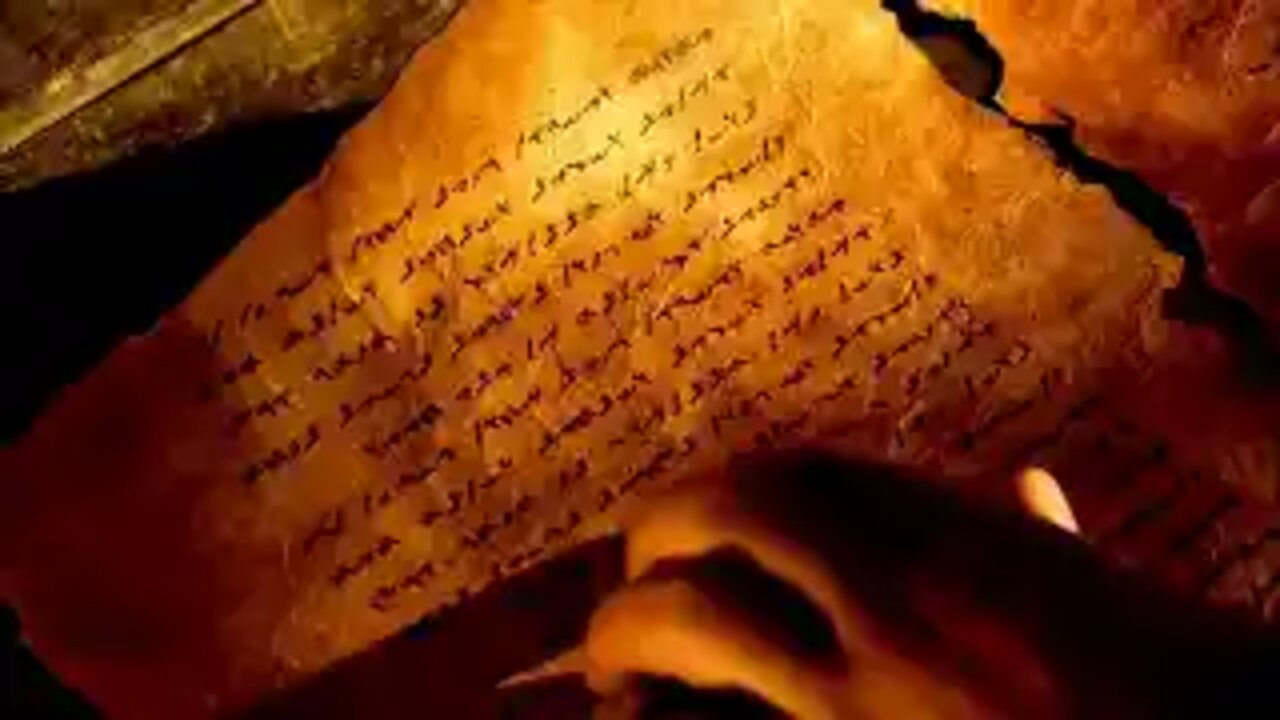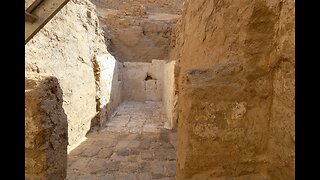Premium Only Content

(2016 Documentary) History of the Bible - Who Wrote the Bible - Why It's Reliable?
Video Description: To many, the origin of the Bible can be summed-up as follows: "A mere translation of a translation of an interpretation of an oral tradition" - and therefore, a book with no credibility or connection to the original texts. Actually, the foregoing statement is a common misunderstanding of both Christians and non-christians alike. Translations such as the King James Version are derived from existing copies of ancient manuscripts such as the Hebrew Masoretic Text (Old Testament) and the Greek Textus Receptus (New Testament), and are not translations of texts translated from other interpretations. The primary differences between today's Bible translations are merely related to how translators interpret a word or sentence from the original language of the text source (Hebrew, Aramaic and Greek).
Origin of the Bible - The Reliability of Ancient Manuscripts
Another challenge against the origin of the Bible is the reliability of the manuscripts from which today's Bibles are translated. Remarkably, there is widespread evidence for absolute reliability. There are more than 14,000 existing Old Testament manuscripts and fragments copied throughout the Middle East, Mediterranean and European regions that agree dramatically with each other. In addition, these texts agree with the Septuagint version of the Old Testament, which was translated from Hebrew to Greek some time during the 3rd century BC. The Dead Sea Scrolls, discovered in Israel in the 1940's and 50's, also provide phenomenal evidence for the reliability of the ancient transmission of the Jewish Scriptures (Old Testament) before the arrival of Jesus Christ. The Hebrew scribes who copied the Jewish Scriptures dedicated their lives to preserving the accuracy of the holy books. These scribes went to phenomenal lengths to insure manuscript reliability. They were highly trained and meticulously observed, counting every letter, word and paragraph against master scrolls. A single error would require the immediate destruction of the entire text.
The manuscript evidence for the New Testament is also dramatic, with over 5,300 known copies and fragments in the original Greek, nearly 800 of which were copied before 1000 AD. Some manuscript texts date to the early second and third centuries, with the time between the original autographs and our earliest existing copies being a remarkably short 60 years. Interestingly, this manuscript evidence far surpasses the manuscript reliability of other ancient writings that we trust as authentic every day. Look at these comparisons: Julius Caesar's "The Gallic Wars" (10 manuscripts remain, with the earliest one dating to 1,000 years after the original autograph); Pliny the Younger's "History" (7 manuscripts; 750 years elapsed); Thucydides' "History" (8 manuscripts; 1,300 years elapsed); Herodotus' "History" (8 manuscripts; 1,300 years elapsed); Sophocles (193 manuscripts; 1,400 years); Euripides (9 manuscripts; 1,500 years); and Aristotle (49 manuscri
-
 26:12
26:12
Coriencio
3 months ago(March 2025) Tomb of the Exodus Pharaoh: What Was Found & Why You Don't Know About It! - Bible Expedition
3623 -
 8:06
8:06
China Uncensored
15 hours agoThis Could Be China’s LAST CHANCE To Save Its Economy
13.7K22 -
 LIVE
LIVE
The Bubba Army
2 days agoDocumentary Premiere, A HUGE SUCCESS! - Bubba the Love Sponge® Show | 9/08/25
1,638 watching -
 32:15
32:15
DeVory Darkins
9 hours ago $6.38 earnedDemocrats PAINFULLY WRECKED by Tom Homan as paid protesters ERUPT in Chicago
17.2K45 -
 16:59
16:59
Degenerate Jay
14 hours ago $2.54 earnedIs Metal Gear Solid Delta: Snake Eater Worth Buying?
35.6K2 -
 4:26:28
4:26:28
Flex011
6 hours ago $0.55 earnedCronos: The New Dawn – Brutal Time-Travel Horror Survival
11.7K2 -
 33:11
33:11
The Finance Hub
18 hours ago $2.17 earnedBREAKING: JD VANCE JUST RELEASED A MASSIVE BOMBSHELL!!! OMG!!
14.2K30 -
 18:06
18:06
Professor Gerdes Explains 🇺🇦
16 hours agoAfter Major Attack, Trump Vows "Phase II" Sanctions on Russia
12.4K11 -
 5:24:59
5:24:59
EVASIVE_rabbi
6 hours ago✅️ 2 Dumb Navy Vets & A First Playthrough #Coop ✅️
6.78K1 -
 9:25:59
9:25:59
Cook14u
10 hours agoSeahawks Let Me Down, DO NOT Talk About How I Look 🤐🙃🥴
4.49K